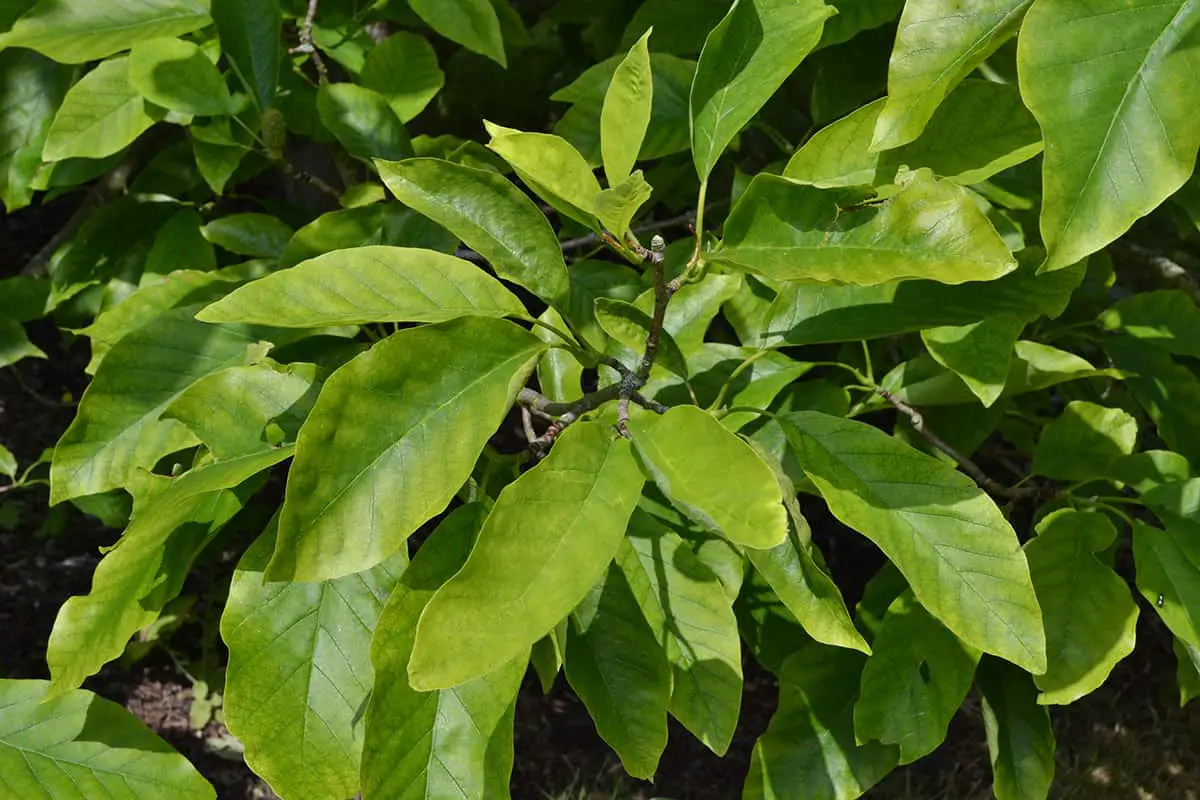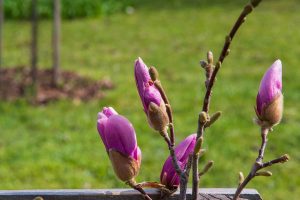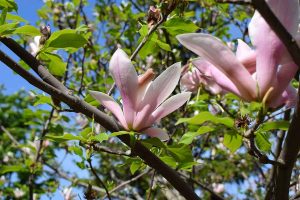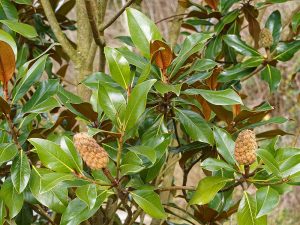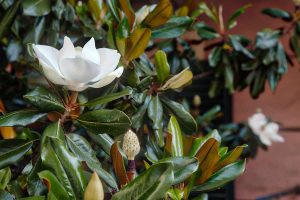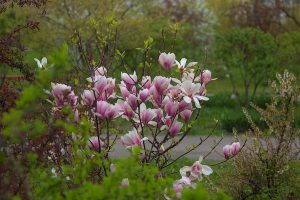The Cucumber tree has provided many uses throughout history, but today it is most often grown as a shade tree due to its great height and widely spreading crown.
It takes up a lot of space and so is rarely planted in home gardens, and is more commonly seen in parklands or in open spaces such as golf courses. If you are fortunate enough to be growing a Cucumber Tree Magnolia, you can find out all about how to care for it here.
Table of Contents
Cucumber Tree Magnolia Facts
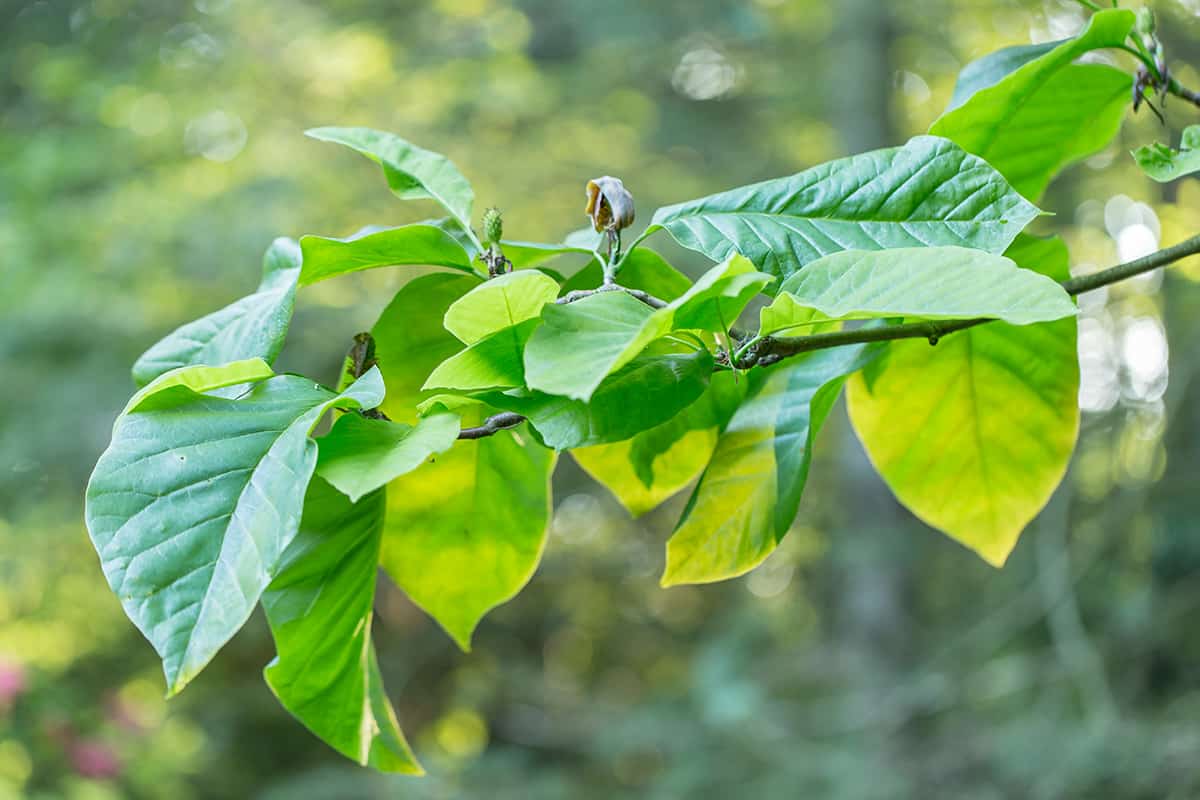
The Cucumber Tree is a type of magnolia that is native to the Appalachian Mountains in North America, running from Ontario in Canada, and down through much of the eastern United States. In Canada, this is a protected species because it is on the endangered list.
It is one of the largest of all magnolia trees and is certainly the hardiest. Unlike most types of magnolia, the Cucumber Tree is not cultivated for its flowers. This is because the flowers of the Cucumber Tree are much smaller than their relatives, and they are a yellow-green color which means they are camouflaged against the foliage of the tree. The fact that most of the flowers are produced on the high branches of the Cucumber Tree is another reason why the blooms often go unnoticed.
After flowering, the blooms develop into fruits that resemble cucumbers, hence the common name of this magnolia tree. The fruits start out green and ripen to a shade of red, before bursting open to reveal red seeds. The buds and flowers of this tree are edible, and were a source of food for Indigenous Americans. The fruits and seeds are popularly foraged by birds and mammals when they fall from the tree.
As well as being an excellent shade tree, the Cucumber Tree is an attractive specimen tree. It has a huge sturdy runk which can grow up to 5 feet in diameter, and unusually, it has ridged bark unlike other types of magnolia. The wood of this tree is sometimes used as a budget-friendly alternative to walnut.
The large foliage on the Cucumber Tree is handsome, with each leaf spanning up to 10 inches in length. As a deciduous species, the leaves remain green through spring and summer, before fading to yellow in the fall and shedding.
- Botanical name: Magnolia acuminata
- Common names: Cucumber Tree, Blue Magnolia, Mountain Magnolia
- Plant family: Magnoliaceae
- USDA hardiness zone: 4- 8
- Mature height: Up to 80 feet
- Mature spread: Up to 60 feet
Varieties of Cucumber Tree Magnolia
Magnolia ‘Butterflies’
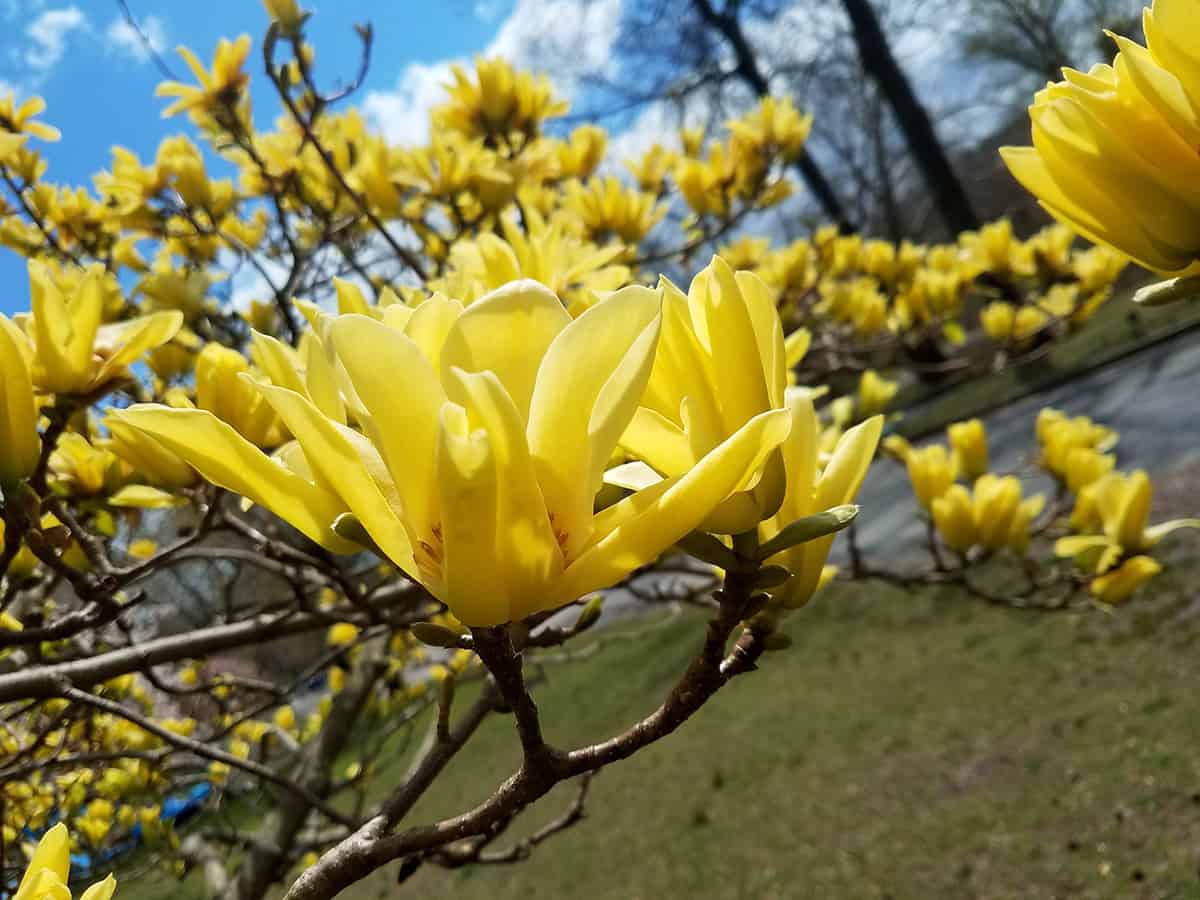
This magnolia plant is a hybrid, created from the Cucumber Tree Magnolia and the Yulan Magnolia (Magnolia Denudata). It produces striking yellow flowers which bloom in profusion midway through spring, on bare branches before the foliage unfurls. The flowers are shaped like tulips, and typically measure 4 inches in length.
They have a lemony citrus scent and last for over a week. After flowering, the leaves of the tree arrive and are equally as interesting as the blossoms, in an attractive shade of dark green. This tree is hardy, though not as hardy as the Cucumber Tree, and is suited for growing in USDA hardiness zones 5 through to 9.
Magnolia ‘Elizabeth’
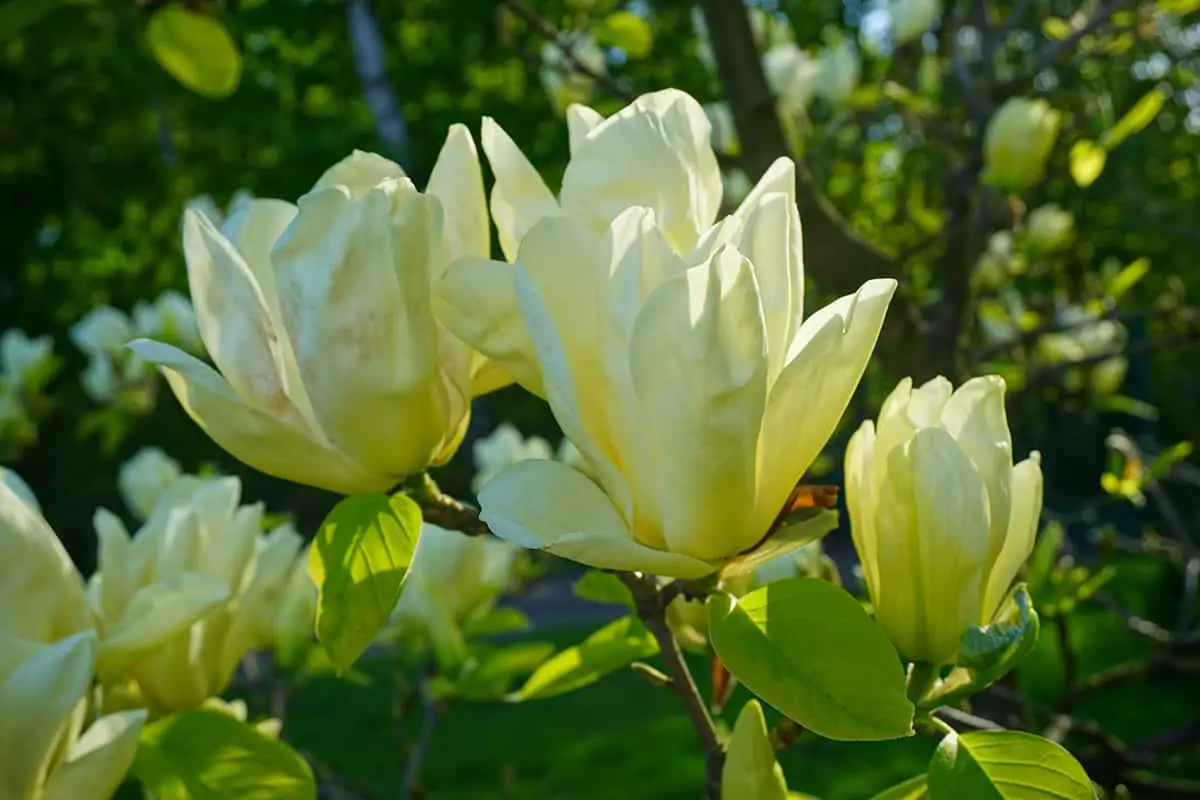
This is another type of magnolia which is the result of crossing the Cucumber Tree with the Yulan Magnolia. It is a medium-sized tree at an eventual height of 30 feet, with a pyramid-shaped crown that is lined with enormous yellow flowers measuring 8 inches across.
The flowers emerge on bare branches in early to mid-spring, before the arrival of the leaves, which makes for a deeply dramatic look. The flowers bloom for around 4 weeks, before eventually fading to cream.
The tree is suitable for growing in USDA hardiness zones 5 through to 8, though since the flowers bloom early in the season these can be damaged by frost in some climates. This is an award-winning magnolia, which was first introduced to the market in 1978 as one of the first magnolias with yellow flowers.
How to Care for your Cucumber Tree Magnolia
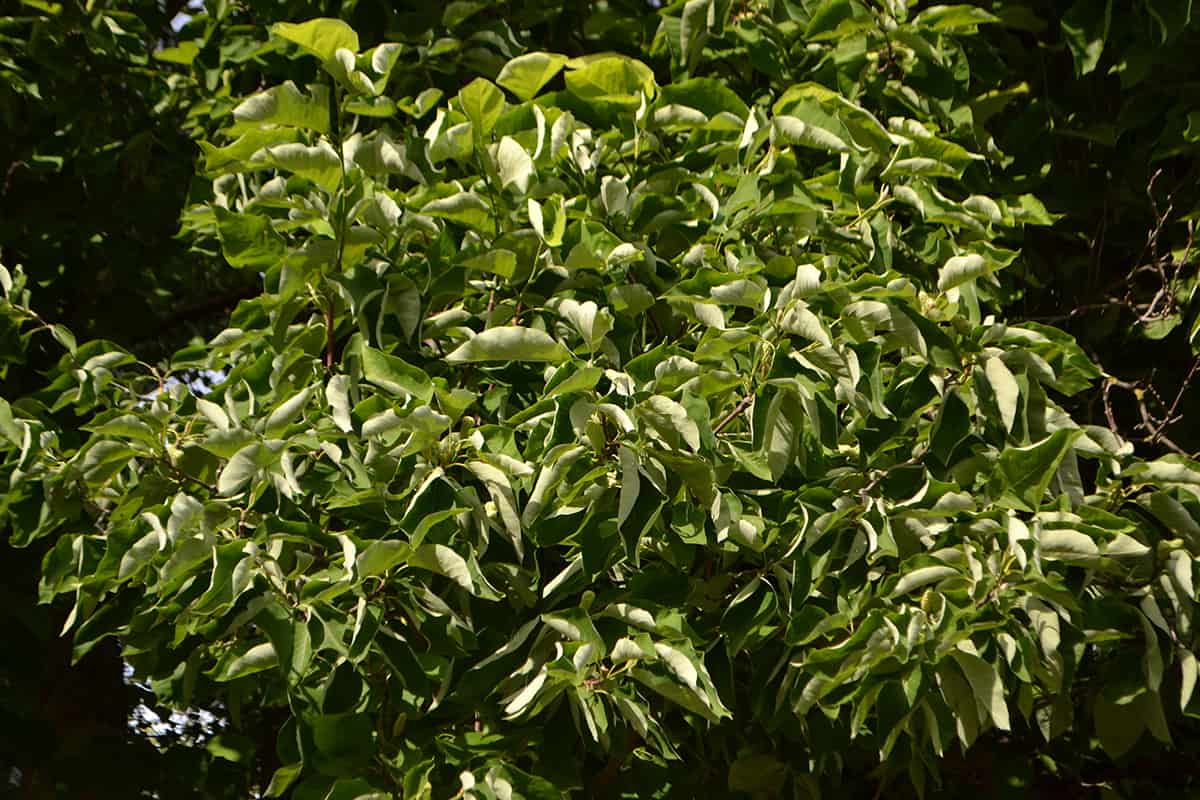
Magnolia trees are easy to care for when they are grown in climates and conditions that are similar to those found in their native environments.
Light
The Cucumber Tree grows well in both full sun and partial shade. Since it grows to great heights, it is rarely beneath the canopy of taller trees, and so is well adapted to tolerating full sun, however, in hot climates it will benefit from some shade. When planting a Cucumber Tree it should be positioned in a spot where it has enough space to reach its eventual size, which typically means planting it far away from any other trees or buildings.
The lack of nearby structures will ordinarily mean that the tree receives full sun. Be careful not to plant it beneath the full shade of taller trees, as it will not have space to grow, and will be stunted due to lack of sunlight.
Soil
The type of soil a Cucumber Tree is grown in will make a big difference in how well it is able to grow. This magnolia thrives in soil that is consistently moist, but not wet, so the soil must be well draining but also moisture retentive.
The Cucumber Tree cannot withstand waterlogged soil, so dense or clay soils should be avoided. Improve the draining ability of your soil by adding sand to it, and also use organic compost in the mix because this will hold moisture close to the roots, while also providing the nutrients the tree needs. In terms of pH, acidic soils are best for the Cucumber Tree Magnolia, though neutral and slightly alkaline soils will be tolerated.
Water
Magnolia trees are usually thirsty, and this is no exception. The Cucumber Tree will grow best in soil that is consistently moist, so climates with heavy rainfall are best for this plant. If you are experiencing periods of drought then the Cucumber Tree will tolerate this for a limited time, however, you should aim to supplement with additional watering to keep the soil moist.
The Cucumber Tree will not tolerate waterlogged soil, so avoid watering the tree if there has been recent rainfall. Heavy rainfall can lead to the soil that is too wet, which is why well-draining soil is essential for the Cucumber Tree, as this will allow excess water to drain away from the roots.
Temperature
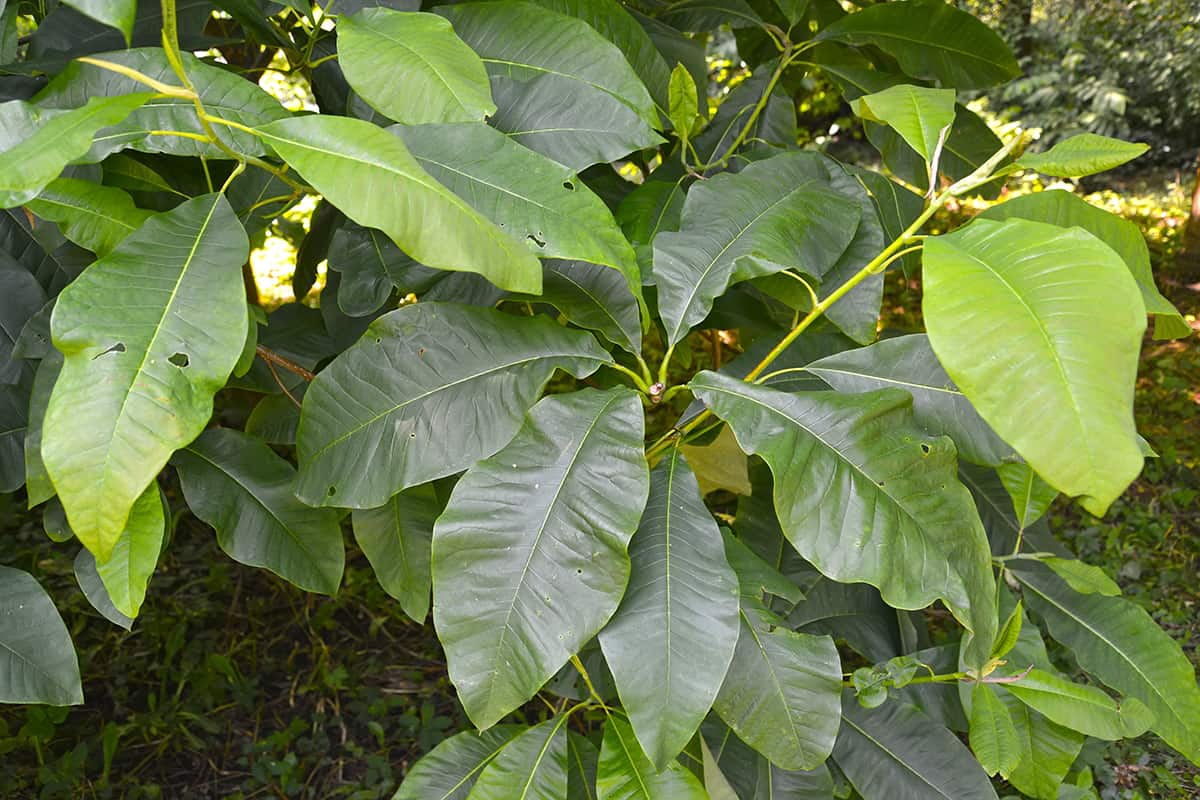
The Cucumber Tree is suitable for growing in USDA hardiness zones 4 through to 8. This makes it the hardiest of all types of magnolia, able to withstand temperatures down to -30°F. The flowers of the tree typically won’t bloom until later in spring, but they will suffer damage in the event of a late frost.
In terms of heat, the Cucumber Tree Magnolia is sensitive to high temperatures, and therefore cannot be grown in USDA hardiness zones any higher than zone 8, because they get too hot. If at all possible, they will benefit from shade during mid-afternoon in warm climates, especially when young.
Fertilizer
Magnolia trees which are grown in pots should be fertilized because their roots cannot spread out to seek out new sources of nutrition. The huge size of the Cucumber Tree Magnolia means that it is not well suited to life in a pot, and instead usually grows directly in the ground. As such, it should be able to access all of the nutrients it needs from the soil, and therefore doesn’t need to be fertilized.
The exception to this is if you notice indications that your tree is nutrient deficient. Signs that your Cucumber Tree Magnolia needs fertilizing include leaves that start to turn yellow during summer, leaves which do not grow as big as usual, and slow growth of stems at under 6 inches each year. In this case, the tree should be fertilized once a year.
For deciduous trees, feed the tree at the end of autumn when the branches are bare, and for evergreens aim to fertilize about a month before the temperature drops to below 40°F. Magnolia trees are vulnerable to fertilizer burn, so only feed the tree when absolutely necessary, and use a diluted fertilizer to minimize the risk of damage.
One of the main signs of fertilizer burn on a magnolia is leaves that look burnt around the edge. If this happens as a consequence of feeding your Cucumber Tree Magnolia, water it heavily to dilute the fertilizer within the soil.
Pests and Disease
Fortunately, the Cucumber Tree Magnolia rarely suffers from pest problems. It is also fairly resistant to disease, though fungal diseases can be a problem for magnolia trees in general.
Fungal diseases are especially prevalent in areas where moisture is high, which can create a problem since magnolia trees enjoy moisture. Watch out for signs of fungal disease such as yellow mushrooms growing at the base of the tree, and the overall sudden decline of the plant.
